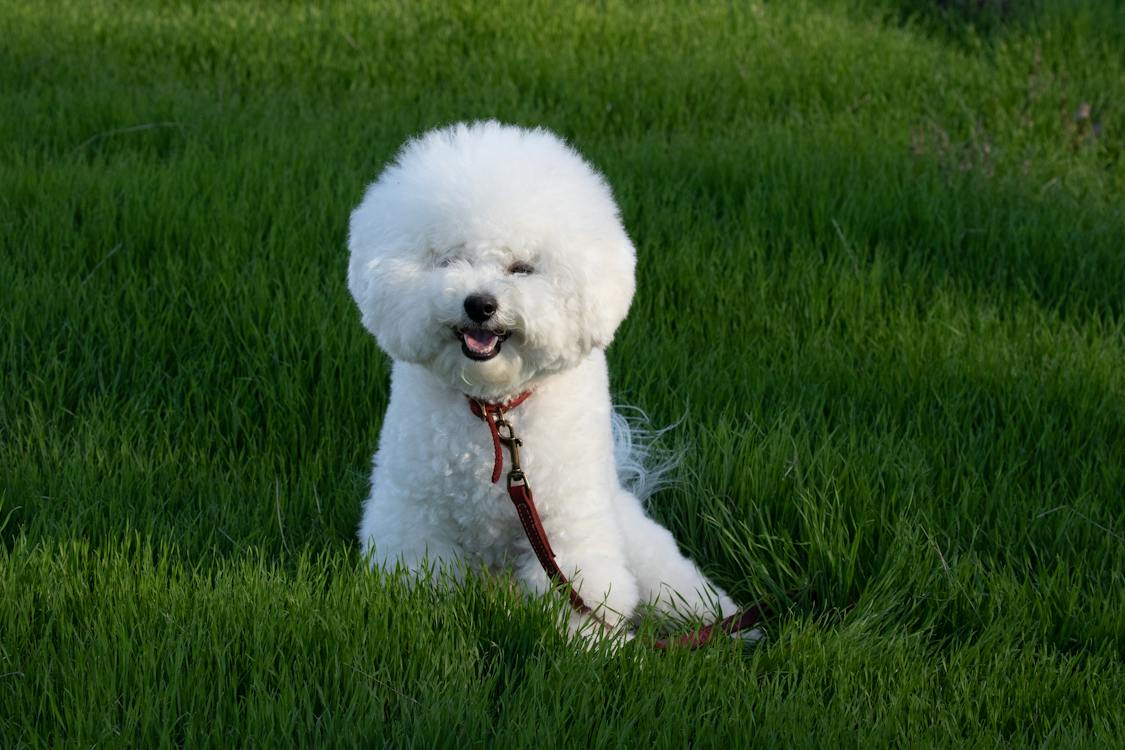The Bichon Frisé (pronounced as bee-shawn free-say) is a small dog but sturdy and resilient. In fact, it is one of the world’s great “personality dogs”. It is a cheerful dog which looks almost like a child’s dog and it can be your happiest and most enthusiastic companion. Let us know more about the history and characteristics of the Bichon Frisé breed.
History
The Bichon Frisé is from the Mediterranean ancestry and is a descendant of the Barbet or Water Spaniel, where the name Barbichon came which is later shortened to Bichon. The Barbichon group of dogs have four breeds which are the Bichon Bolognese, the Bichon Havanese, the Bichon Maltese, and the Bichon Tenerife, where the Bichon Frisé today came from.
The Bichon Frisé dogs found their way to the Canary Islands from the Mediterranean, specifically to the Island of Tenerife. They traveled as Spanish sailors’ companions who may have used them as items for barter.
In the 1300s, when Italy became the center of trade and commerce, the exploration period began. The Bichon Tenerife attracted the attention of noble people and the new middle class of merchants. The dogs were often groomed in the lion style, which was its popular trim back then.
In the late 1400s, the French became enamored of Italian culture and they invaded Italy and its influence spread north. The Italian artists and scholars went north to serve in French courts and they brought with them their favorite pets.
During the reign of Francis I (1515 to 1547), the patron of the Renaissance, was the first appearance of Bichon Frisé in France and its popularity grew under the reign of Henry III from 1574 to 1589.
Based on a legend, King Henry loved his Bichon so much that he carried it with him in a tray-like basket attached around his neck with ribbons wherever he went. There were also a lot of artists that have included a Bichon-like figure in their portraits. These artworks helped in verifying the presence of the Bichon in different countries.
In the late 1800s, the Bichon Frisé became a street dog, doing tricks in circus and fairs. After the First World War, there were a few fanciers who recognized the potential of the dogs and they began to establish their lines through controlled breeding programs.
On March 5, 1933, as written by Madam Abadie of Steren Vor Kennels, the official standard of the breed was adopted by the Societe Central Canine de France. Since the breed has two names which are Tenerife and Bichon, the President of the International Canine Federation proposed a name that is based on the dog’s characteristics and the name Bichon a polio Frise was adopted. It means, “Bichon with the curly coat”. It has an anglicized version which is Bichon Frisé which means “curly lap dog”.
It was on October 18, 1934, when the Bichon Frisé was added to the official registry of the French Kennel Club. And in 1956, they came to the United States when Mr. and Mrs. Fracois Picault immigrated with six Bichons.
On September 1, 1971, the Bichon Frisé was permitted to compete in the American Kennel Club shows. On October 10, 1972, the Bichon Frisé has been granted recognition and are able to compete for championship points in 1973. And in 1975, the Bichon Frisé Club of America was recognized by the American Kennel Club.
Characteristics of the Bichon Frisé
Average size: 9 inches to 11 inches tall
Average weight: 7 to 12 pounds
Hypoallergenic: Yes
The Bichon Frisé belongs to the companion dog breed group. Males and females can grow from 9 inches to 11 inches tall and can weigh from 7 to 12 pounds. They can live from 12 to 15 years. They have double coats which are always white. The undercoat is soft and dense while the outer coat is soft but has a substantial texture.
The Bichon’s most outstanding personality is being cheerful. It loves to be loved and it likes to be the center of attention. It is playful and independent but hates to be alone. In fact, it can suffer from separation anxiety when left alone for many hours.
Caring for the Bichon Frisé
Bichon Frisés are active dogs but they can do well in apartments as well, as long as there are proper play and exercise. You should not leave them for long periods of time because they can develop destructive behavior. If you will be leaving them for even just a short time, it’s better to leave them in a crate.
They have a reputation of not shedding, but that is not true because all creatures with hair shed. The difference is that the shed hair of a Bichon Frisé is caught up in its undercoat instead of falling to the floor. This is why it’s important to brush or comb them to remove dead hair and prevent mats and tangles which can lead to skin problems.
Bichon Frisé is a high maintenance breed and you will need a lot of time for grooming and bathing them. You should brush them at least twice a week and bathe them whenever they get dirty to maintain their clean white coats. It’s better to take them to professional groomers every four to six weeks for a bath, brush, haircut, nail trimming, and ear cleaning.
When feeding the Bichon Frisé, the recommended daily amount of food is ½ to 1.5 cups of high-quality dry food every day, divided into two meals. The amount of food depends on your dog’s age, activity level, build, and metabolism.
The Bichon Frisé breed is one of the best companion dogs that you can have. Whenever you’re having a bad day, their charm can certainly take all your stress away.

